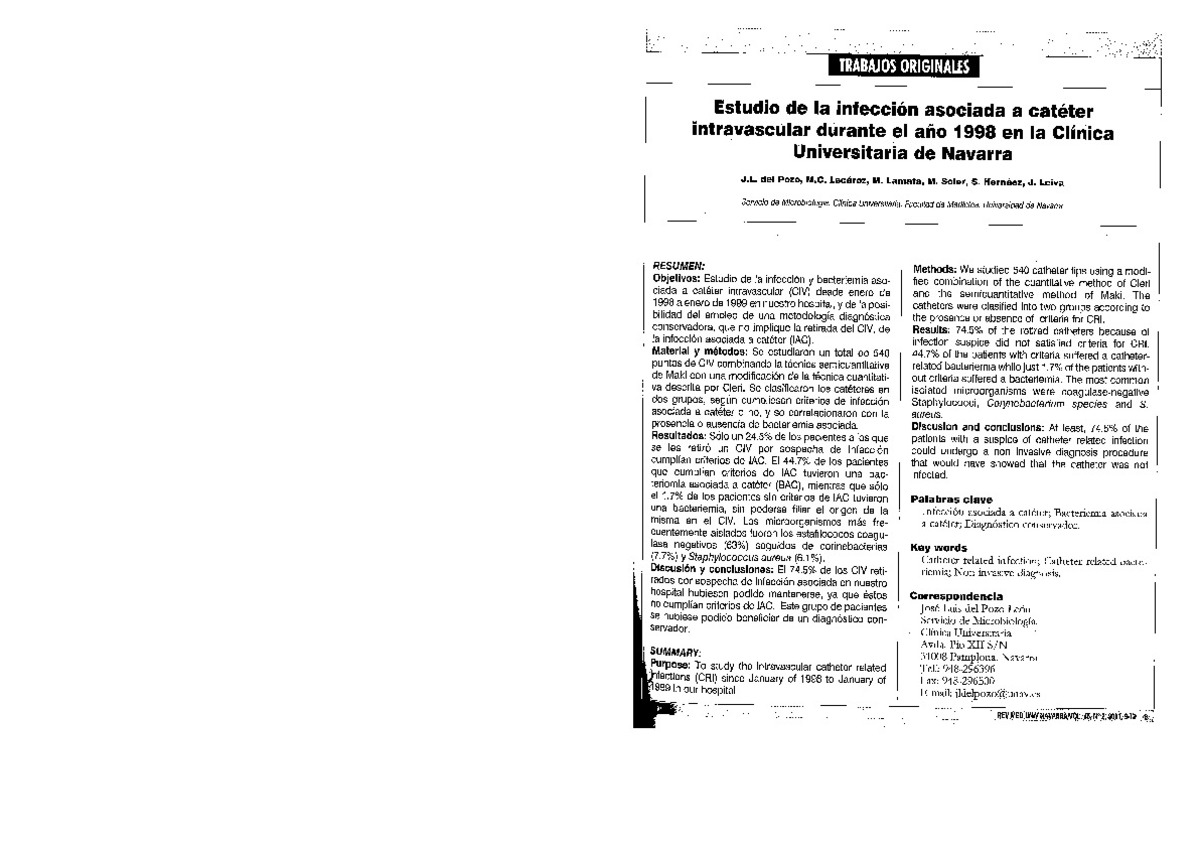Estudio de la infección asociada a catéter intravascular durante el año 1998 en la Clínica Universitaria de Navarra at the University Clinic of Navarra
Palabras clave :
Infección asociada a catéter
Bacteriemia asociada a catéter
Diagnóstico conservador
Fecha de publicación :
2001
Editorial :
Universidad de Navarra
Cita:
Del Pozo JL, Lecaroz MC, Lamata M, Soler M, Hernaez S, Leiva J. Estudio de la infección asociada a catéter intravascular durante el año 1998 en la Clínica Universitaria de Navarra. Rev Med Univ Navarra 2001 Apr-Jun;45(2):9-13.
Aparece en las colecciones:
Estadísticas e impacto
0 citas en

0 citas en

Los ítems de Dadun están protegidos por copyright, con todos los derechos reservados, a menos que se indique lo contrario.







